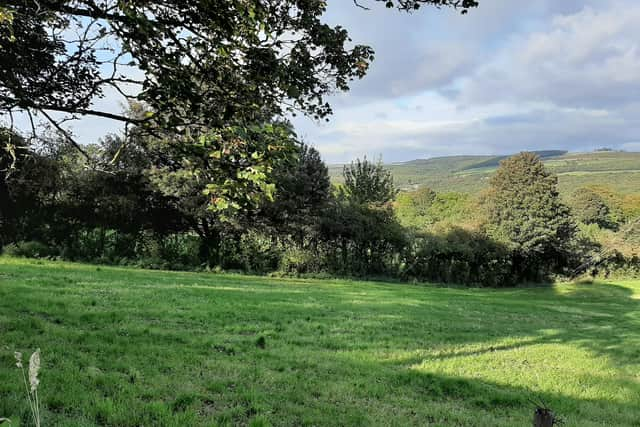Local plan: What options are Sheffield Council considering?
and live on Freeview channel 276
Council officers have set out five spatial options which will guide the local plan – a blueprint for all future developments in the city for some time to come – but warned it would be a tough choice.
Feedback from a consultation on the local plan showed residents were strongly against green belt development but with increasing housing need, pressure to increase employment opportunities and nowhere else in the region to build, the council has a lot to weigh up.


Advertisement
Hide AdAdvertisement
Hide AdIn a document preparing councillors, officers said: “There is no doubt that many members of the public would prefer to see future development restricted to brownfield sites both to protect the city’s green heritage and to promote more sustainable patterns of development.
“But equally, there is considerable public support for providing more affordable housing and a wider mix of housing than will be achievable if we focus development on brownfield land only.
MORE PLANNING: Former Sheffield Ski Village could become new Gravity Park as council looks at new leisure developer Skyline Luge
“Additionally, our ability to have flexibility around employment opportunities would be compromised in this scenario and economic viability remains a problem on many brownfield sites; meaning that the release of greenfield sites (which are generally more economically viable), could help to increase the supply of affordable homes for example.”
What are the five local plan spatial options?
Option one: developing on brownfield sites only.
This would protect undeveloped land, create a more compact city and support regeneration of the city centre but the maximum number of homes per year that could be delivered would be around 2,075 which is significantly less than the housing need calculated by the government.
Advertisement
Hide AdAdvertisement
Hide AdIt would also require significant public investment to overcome viability issues and provide infrastructure; be harder to deliver affordable housing, the right mix of homes and address the employment land shortfall; and some urban brownfield sites are more ecologically valuable than farmland.
MORE POLITICS: Sheffield Council decides to keep spending tens of thousands on Ponds Forge for full council meetings
Option two: building on brownfield land with undeveloped urban land where it is sustainable
This would involve building on undeveloped land in urban areas which are not designated as green belt, such as disused sports grounds, informal greenspace and farmland.
This option has the same pros and cons as option one but offers more opportunities to provide family-sized housing in suburban areas and could provide potential for more affordable housing.
Advertisement
Hide AdAdvertisement
Hide AdOption three: building on brownfield land including in the green belt and undeveloped land
Officers said there are two large brownfield sites in the green belt next to the urban area which could accommodate around 1,100 – 1,200 homes and work spaces.
They said including these sites could enable up to 2,305 homes per year and the brownfield status of these sites could constitute the exceptional circumstances needed to alter the green belt.
But they said there are a number of significant brownfield sites in open countryside away from existing urban areas that would not be suitable because it would increase the need for residents to travel and be highly car-dependent.
Advertisement
Hide AdAdvertisement
Hide AdThis option provides even more opportunities for family-sized housing and employment in relatively sustainable locations but such sites could be unviable for housing due to reclamation costs.
Option four: all of the above with the addition of sustainably located greenfield land in the green belt
This could deliver a better mix of housing and more housing, be more viable, provide more affordable homes, provide opportunity to invest in new rail infrastructure and help provide more jobs.
But there is a risk this option could undermine urban regeneration, increase commuting and therefore pollution and if demand for housing does not materialise, there will be a ‘tilted balance’ in favour of granting planning applications on unallocated greenfield sites. There would also need to be major infrastructure investment to make greenfield sites sustainable.
Advertisement
Hide AdAdvertisement
Hide AdOption five: all of the above including building on as much greenfield land as needed to hit the government’s housing supply targets
Officers said this would provide a great mix of houses and opportunity for affordable homes but it could seriously harm Sheffield’s reputation as the Outdoor City as well as the environment and sites of significant landscape value. There is also a significant risk that it could undermine urban regeneration.
They warned that meeting the Government’s housing supply targets will require more than 16,000 homes being built on land currently designated as green belt, affecting more than seven per cent of it.
How much housing will Sheffield need?
The council planned to accommodate around 40,000 new homes up to 2039. But last year the Government imposed an increased housing target for the largest cities, making Sheffield’s new target more than 53,000 in the same time period.
Advertisement
Hide AdAdvertisement
Hide AdHowever, the Government’s calculations were much criticised by the council which said a more accurate estimation is around 1,000 homes per year less than that.
Councillors on the climate change, economy and development transitional committee will each state their preferred local plan spatial option at a meeting on Thursday, January 13.
The vote share for all options and the option that receives the majority vote will be provided as advice to the co-operative executive as the committee’s preference.